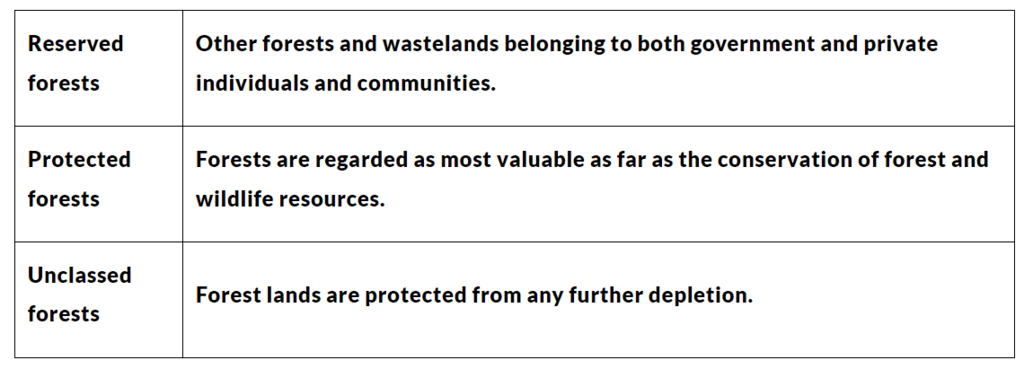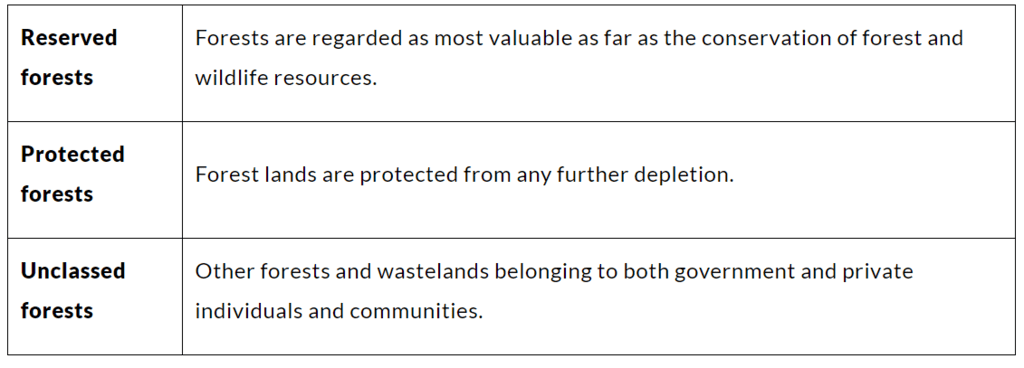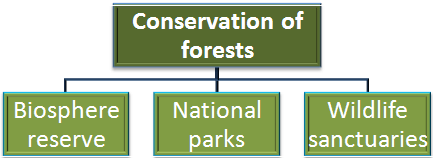NCERT Solutions for Class 10 Geography Chapter 2 - Forest and Wildlife Resources
Q1. Multiple choice questions
(i) Which of the following conservation strategies do not directly involve community participation?
(a) Joint forest management
(b) Beej Bachao Andolan
(c) Chipko Movement
(d) Demarcation of Wildlife sanctuaries
Ans: (d) Demarcation of Wildlife sanctuaries
Wildlife sanctuaries are established and maintained by the government, while all other options are examples of community participation.
Q2. Match the following.

Ans:
Q3. Answer the following questions in about 30 words.
(i) What is biodiversity? Why is biodiversity important for human lives?
(ii) How have human activities affected the depletion of flora and fauna? Explain.
Ans:
(i) Biodiversity refers to the variety of living organisms, species, and habitats. Each organism has a role—producer, consumer, or decomposer—and all depend on one another. For example, without decomposers, waste would accumulate, and soil would lose fertility.
(ii) Habitat destruction, hunting, poaching, overexploitation, environmental pollution, poisoning and forest fires are factors that have led to the decline of biodiversity.
Q4. Answer the following questions in about 120 words.
(i) Describe how communities have conserved and protected forests and wildlife in India.
(ii) Write a note on good practices towards conserving forests and wildlife.
Ans:

(i) Communities across India have played a vital role in conserving forests and wildlife.
- In the Sariska Tiger Reserve, Rajasthan, villagers opposed mining by using the Wildlife Conservation Act.
- In Alwar district, villagers declared 1,200 hectares as "Bhairo dev Dakav Sonchuri" and made their own rules to protect wildlife.
- In India, nature worship has preserved many forests as Sacred Groves, which remain untouched.
- People worship trees: Mundas and Santhals worship Mahua and Kadamba, Odisha and Bihar tribals worship Tamarind and Mango, and Banyan and Peepal are also considered sacred.
- Monkeys and Langurs near temples are fed and respected, while Bishnoi villages protect Blackbuck, Nilgai, and Peacocks.
- The Chipko Movement and Joint Forest Management (JFM) highlight community efforts in forest conservation.
(ii) Good conservation practices in India include both legal measures and traditional knowledge.
- Good conservation practices in India combine legal measures and traditional knowledge.
- National Parks, Wildlife Sanctuaries, and Biosphere Reserves help protect endangered species.
- The Bishnoi community shows cultural respect for wildlife by protecting animals like blackbuck and peacocks.
- Movements such as Beej Bachao Andolan and Navdanya promote organic farming and seed preservation.
- Van Mahotsav campaigns raise awareness about forest conservation.
- Joint Forest Management (JFM) involves local communities in restoring degraded forests, offering them non-timber benefits and a share in forest produce for their protection efforts.
|
66 videos|630 docs|79 tests
|
FAQs on NCERT Solutions for Class 10 Geography Chapter 2 - Forest and Wildlife Resources
| 1. What are the main types of forests found in India? |  |
| 2. Why are forests important for wildlife conservation? |  |
| 3. What are the threats to forest and wildlife resources in India? |  |
| 4. How can we promote conservation of forests and wildlife? |  |
| 5. What role do national parks and wildlife sanctuaries play in forest conservation? |  |






















